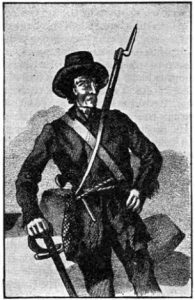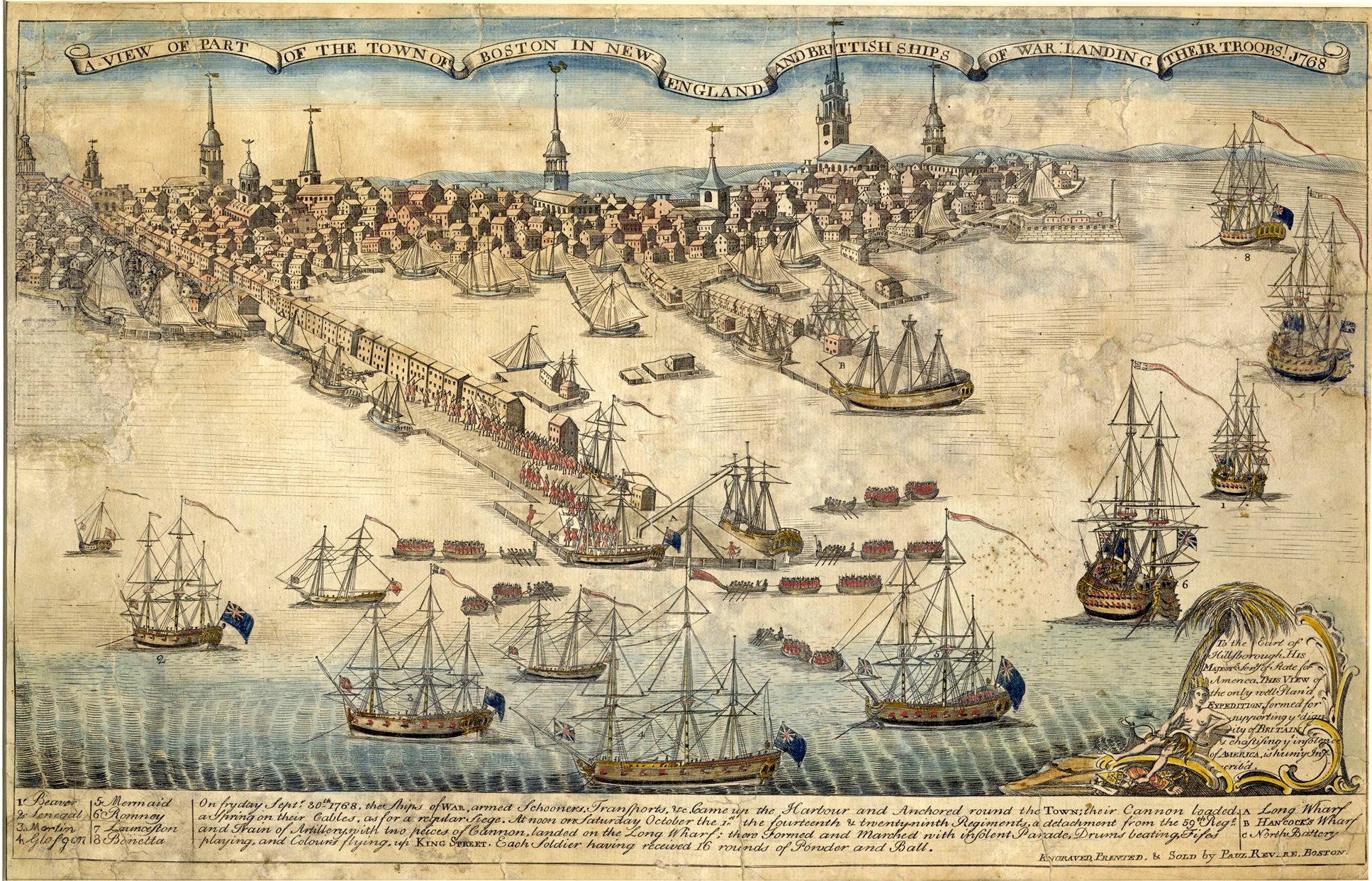The British defeat at Yorktown in October 1781 did little to convince those fighting that peace was near.
Gen. George Washington pleaded with his French naval ally, Admiral de Grasse, for a campaign against other British strongholds, perhaps in the Carolinas. When Grasse, instead, returned to the Caribbean, Washington began planning for his 1782 campaign and warned Congress against complacency.
In England, George III insisted that Yorktown was a minor setback, and he had no intention of presiding over the dissolution of the British empire. While Yorktown was “very unfortunate,” the king told Parliament, God was on Britain’s side, and the country would retake the initiative: “I retain a firm confidence in the protection of Divine Providence, and a perfect conviction of the justice of my cause; and I have no doubt but that, by the concurrence and support of my parliament, by the valor of my fleets and armies, and by a vigorous, animated, and united execution of the faculties and resource of my people, I shall be enabled to restore the blessing of a safe and honorable peace to all my dominions.”[1]
And so, while diplomats danced in negotiations, the enemies fought for another 20 months. By now, the war involved not just American rebels, American Loyalists, British, and French, but also the Dutch, Spanish, Native Americans, Asian Indians, and other indigenous people. They fought around the world; on both American continents; in Europe, Africa, and Asia; on the Atlantic, Pacific, and Indian oceans; even in Hudson Bay.
Although the war would begin winding down in the next year, it wasn’t obvious in October 1781. Here are the war’s final fights—some pitched battles, others minor skirmishes—for each major theater of war:
Europe, Jan. 29, 1783
The French cajoled Spain into entering the war by promising a joint expedition against British-held Gibraltar and Minorca. Both Mediterranean strongholds were sore points with the Spanish, who had been forced to cede them to Britain in perpetuity after the War of Spanish Succession in 1713.
Immediately, Spain had loser’s remorse. A joint French–Spanish expedition against Gibraltar in 1779 became a siege. A major assault in September 1782 using state-of-the-art floating batteries was met by British-perfected technology—massive use of heated shot and incendiary bombs that “exceeded our most sanguine expectations,” an officer wrote.[2] The assault on Gibraltar became a debacle, and after the British Navy eluded allied defenses with supplies and relief for the garrison, the fighting tapered off.
The last firefight in Europe was a naval skirmish between British and allied gunboats on Jan. 29. Seven days later, the allies got the news about the preliminary peace treaty that had been signed in Paris. They quickly informed the British that the siege was over.[3]
Continental Navy, March 10, 1783
By late 1782, only three Continental Navy ships were still active. Two of them rendezvoused in Philadelphia in January 1783 for a special mission. Alliance, captained by John Barry, 38, and Duc de Lauzun, a smaller ship, were ordered to sail to Havana where money from a Dutch loan awaited the insolvent rebels.[4]
Returning with the money, off the Florida coast, they saw three British ships bearing down on them. Barry told the slower Lauzun to jettison its guns and make a run for it. It escaped and arrived in Philadelphia 11 days later. Alliance was headed for an uneven battle with the British when a French warship appeared; two smaller British ships fled.[5]
With the French ship inexplicably failing to engage in battle—the captain later said he thought the rebel ships were manned by the British—Alliance fought the remaining British ship, Sibyl, a slightly smaller frigate commanded by Capt. James Vashon.[6]
Barry later reported a major victory over Sibyl, forcing the British to retreat. But Vashon also claimed victory, and said Alliance retreated.[7]
Alliance later eluded British ships off Delaware Bay, and changed destination for Newport, where it delivered the money on March 20.[8]
The South, March 30 or 31, 1783
The British army evacuated Charlestown, South Carolina (soon renamed Charleston), on December 14, 1782, but through at least March 1783, attacks continued on rebel merchant ships off the Carolina coast. Primary sources are inconsistent as to the dates and whether there was one or multiple incidents, but it’s clear that one action involved a rebel ship, Eliza, carrying a cargo from Havana of sugar, rum, and possibly specie. On March 30 or 31, a British frigate or Loyalist privateer ran Eliza aground on Bull Island, 25 miles northeast of Charlestown. One side or the other burned the ship to keep the enemy from either the cargo or the ship itself. There might have been a skirmish.[9]
The North, April 3, 1783
Despite his desire for a new offensive in 1782, Washington’s army spent most of the year watching the British stronghold in New York City, trying to thwart British foraging expeditions and stop presumably rebel “patriots” from selling goods to the British. Beyond his army, Whig and Loyalist militias conducted a brutal war against each other and civilians.
One of the Loyalist militiamen was Capt. John Bacon. His band of two dozen men regularly raided central New Jersey Whigs. In October 1782—according to rebel reports—Bacon killed most of a crew of Whig privateers as they slept on a beach after unloading a captured Tory cargo. Two months later, the rebels caught up with him, but with the help of Loyalist residents, he fought them off.
But Bacon’s luck ran out on April 3, 1783. A Whig posse found him in an Egg Harbor tavern, near present-day Atlantic City. He surrendered after a scuffle and was given quarter. However, that didn’t stop one rebel militiaman, who believed Bacon had killed a brother, from bayoneting the now-defenseless Loyalist. Wounded, Bacon tried to escape, but was shot dead.[10]
West Indies, April 18, 1783
In May 1782, the Spanish, with the help of a small Whig fleet, seized the Bahamas’ chief island, New Providence, from the British, taking over without resistance an “invalid garrison of 170 fit for duty.”[11] The relationship between the Spanish garrison and British civilians was tense, as the Spanish arrested privateers and traders they believed preyed on Spanish ships. New Providence, said the Spanish leader, Capt. Antonio Claraco y Sanz, is “one of the miserable spots of the universe.”[12]
However, relief was imminent. Claraco received word in April 1783 of a ceasefire and the peace treaty that returned the Bahamas to the British. His superiors ordered him to surrender the island to the first British officials who arrived.
Meanwhile, in British-held St. Augustine, Florida, a Loyalist militia colonel who had fled South Carolina heard rumors of a peace treaty, but no confirmation of it. Col. Andrew Deveaux, 25, took advantage of the ambiguity. He pulled together an army of 65 militiamen, sailed to the Bahamas, arrived at an outer island in April, and chose to ignore the confirmation Bahamians gave him that a treaty had indeed been signed. With an additional 170 whites, free blacks, and black slaves, he arrived at New Providence on April 14.
There, Claraco informed him the war was over, and again, Deveaux ignored the information. He fired on New Providence, and on April 18, with the Spanish running out of water in their besieged fort, Claraco surrendered. The Caribbean war was over.
The Frontier, May 1783
Most Native Americans sided with the British who had tried to stop the influx of settlers who, by trickery, coercion, or outright theft, moved in on Indian territory.

With peace near, the British turned off the spigot of arms and abandoned their Indian allies to the Americans, or, as the Earl of Shelburne, the head of Britain’s government, said, “remitted to the care of neighbors whose interest it was as much as ours to cultivate friendship with them, and who were certainly the best qualified for softening and humanizing their hearts.”[13] But Indian raids continued on the Ohio Valley frontier.
Simon Girty, a translator and liaison between the British and the Indian nations, was honored and respected by Loyalists and natives, but demonized and scapegoated by Whig settlers who were convinced he led raids that resulted in massacres and torture.
In May 1783, he and some Indians raided Whig settlers about five miles east of Fort Pitt (now, Pittsburgh’s Squirrel Hill neighborhood). Girty’s mother and Whig half-brother lived in the area, and it’s possible that he also visited them because despite political differences, they remained close.[14]
Mississippi Valley, May 11, 1783
The most active loyalist raider in the Mississippi Valley against the rebels’ cobelligerent, Spain, was Capt. James Colbert, a trader who had married into the Chickasaw Indian nation and who led a small multiracial, multiethnic force. His most ambitious raid was on April 17, 1783, against Arkansas Post and its Spanish fort. Arkansas Post was an important site near the junction of the Mississippi and Arkansas rivers, and a major portal for traders and hunters. After six hours of fighting, Colbert retreated, but was able to take as prisoners Spanish civilians and soldiers who were caught outside the fort (including the fort’s second-in-command). He later released many of the prisoners, challenging the Spanish to match his compassion by releasing loyalist prisoners who had been taken after an uprising in Natchez (now in Mississippi).[15]
Not only did the Spanish commander refused to reciprocate, but he pursued Colbert.
On May 11, a Spanish convoy saw signs of Colbert’s men about 90 miles northeast of Arkansas Post. A detachment of soldiers and Quapaw Indian volunteers caught up with some stragglers, including Colbert’s second-in-command, who was killed. Another Loyalist drowned, and another’s arm was broken, but most escaped. The Spanish freed three of their prisoners.
In mid-May, the Spanish commander wrote Colbert to inform him of the peace and ask him to release his remaining prisoners. Colbert got the letter four months later, and he complied. Meanwhile, the main body of Chickasaws made their own peace with Spain.[16]
India, June 25, 1783
The American rebels’ allies, France and Holland, both had a presence in India and Ceylon (now Sri Lanka)—a major threat to Britain’s trade and its own presence in the form of the Dutch East India Company.
Despite the help of an Indian ally, French efforts foundered until a new, aggressive naval commander, Adm. Pierre André de Suffren, arrived in India in February 1782. Over the next 17 months, he would fight five battles with his British counterpart, Adm. Edward Hughes.
Hughes had none of Suffren’s naval brilliance; Suffren lacked the kind of competent captains that Hughes had. Ultimately, Suffren defeated Hughes in the fifth and final fight off the coast of French-held Cuddalore, on India’s southeastern coast, on June 20, 1783.
Hughes sailed away to repair his damaged ships and tend to his scurvy-ravaged crew. In doing so, he was forced to abandon Maj. Gen. James Stuart, who was besieging Cuddalore from land. Seeing the French ships return to Cuddalore—and not Hughes—Stuart despaired. His position was now “almost insupportable. … My mind is upon the rack without a moment’s rest.”[17]
Around 3 a.m. on June 25, French troops attacked Stuart’s position. It was a debacle. The French commander on the sortie was incompetent, a “recognized disability,” according to one officer, and he was forced to retreat leaving 40 of his troops dead and 100 taken prisoner.[18]
Before the French could take any further action, on an overcast Sunday, June 29, a British frigate appeared flying a white flag. The war was over.[19]
Cuddalore was the last battle of the American Revolution.
[1] Annual Register … for the Year 1782 (London: G. Auld, 1800), 291-292.
[2] John Drinkwater, A History of the Late Siege of Gibraltar (London: T. Spilsbury, 1786), 273.
[3] René Chartrand, Gibraltar 1779–83 The Great Siege (Oxford: Osprey Publishing Ltd, 2006), 85; T.H. McGuffie, The Siege of Gibraltar 1779–1783 (London: B.T. Batsford, 1965), 181. See also Don N. Hagist, “The Greatest Siege,” Journal of the American Revolution, https://allthingsliberty.com/2014/03/the-greatest-siege/.
[4] Tim McGrath, John Barry: An American Naval Hero in the Age of Sail (Yardley, Pa.: Westholme, 2010), 315; “Duc de Lauzun,” Dictionary of American Fighting Ships, http://www.history.navy.mil/danfs/d6/duc_de_lauzun.htm.
[5] Martin I.J. Griffin, Commodore John Barry (Philadelphia: Self-published, 1903), 220.
[6] McGrath, John Barry, 326-328.
[7] J. Ralfe, The Naval Biography of Great Britain, Vol. III (London: Whitemore & Fenn, 1828), 190-192.
[8] Barry report, March 20, 1783, in Griffin, Commodore John Barry, 221.
[9] Interview with Dr. E. Lee Spence, June 15, 2015, who cites South Carolina Weekly Advertiser, April 2, 1783; Gazette of the State of Georgia, April 10, 1783; South Carolina Weekly Gazette, April 5, 1783. Because of the different descriptions of type of ship, Spence believes there is no question that at least two vessels were destroyed. See also Spence, Shipwrecks of South Carolina and Georgia, “Spence’s List 1520-1865” (Sullivan’s Island, S.C.: Sea Research Society, 1984), pp 268-269.
[10] Harry M. Ward, Between the Lines: Banditti of the American Revolution (Westport, Conn.: Praeger, 2002), 108-111.
[11] John Maxwell to Thomas Townsend, May 14, 1782, in Remembrancer (London: J. Debrett, 1782) 2: 148. Much of the information in this section is from James A. Lewis, The Final Campaign of the American Revolution (Columbia: University of South Carolina Press, 1991).
[12] Claraco, May 6, 1782, in Michael Craton and Gail Saunders, Islanders in the Stream: A History of the Bahamian People (Athens, Ga.: University of Georgia Press, 1999), 169.
[13] [Hansard], The Parliamentary History of England from the Earliest Period to the Year 1803, Vol. XXIII (London: T.C.Hansard, 1814), 410.
[14] David G. Colwell, “The Causes and Accuracy of the Reputation of Simon Girty in American History,” Pittsburgh History 77 (Spring 1994): 41, note 19; Consul Willshire Butterfield, History of the Girtys (Cincinnati: Robert Clarke & Co., 1890), 210.
[15] Edwin C. Bearss, Special History Report: The Colbert Raid (Denver: Denver Service Center, Historic Preservation Team, National Park Service, U.S. Dept. of the Interior, November 1974), 46, http://www.nps.gov/arpo/historyculture/upload/Colberts-Raid_Special-History-Report-with-notes_reduced.pdf.
[16] Anna Lewis and Jacobo du Breuil, “Some Spanish Letters Written from Arkansas Post,” Arkansas Historical Quarterly 2, No. 1 (March 1943): 52-55.
[17] Stuart to Select Committee at Madras, June 25, 1783, in Political Magazine…for the Year M,DCC,LXXXIV 6 (1784):12
[18] G[eorge] B[ruce] Malleson, Final French Struggles in India (London: W.H. Allen & Co., 1884), 73-74.
[19] Bailli de Suffren, Journal de Bord du Bailli de Suffren dans L’Inde, Henri Moris, ed. (Paris: Chez Challamel, 1888), 282.








3 Comments
Thanks, Don, a useful summary of what happened after Yorktown. You provide useful detail about the world-wide context of British diplomacy and policy regarding the Revolutionary War.
Don’t forget about Blue Licks in August of 1782; admittedly that was irregulars vs. irregulars though.
Michael, Blue Licks was certainly an important battle; I think it was one of the four post-Yorktown fights that made the most difference, because it mobilized Virginia and the Continentals in a way it hadn’t heretofore. But it certainly wasn’t the last incident; it wasn’t even the final battle. The Loyalist–Indian attack on Fort Henry (now Wheeling, WV) in September falls into the category of a heated battle. There were certainly skirmishes right up until Girty’s raid in May 1783, not the least of which was George Roger Clark’s November 1782 invasion of Indian land in Ohio during which his army killed and scalped 10 Shawnees and took seven prisoners, while conducting a scorched-earth strategy.